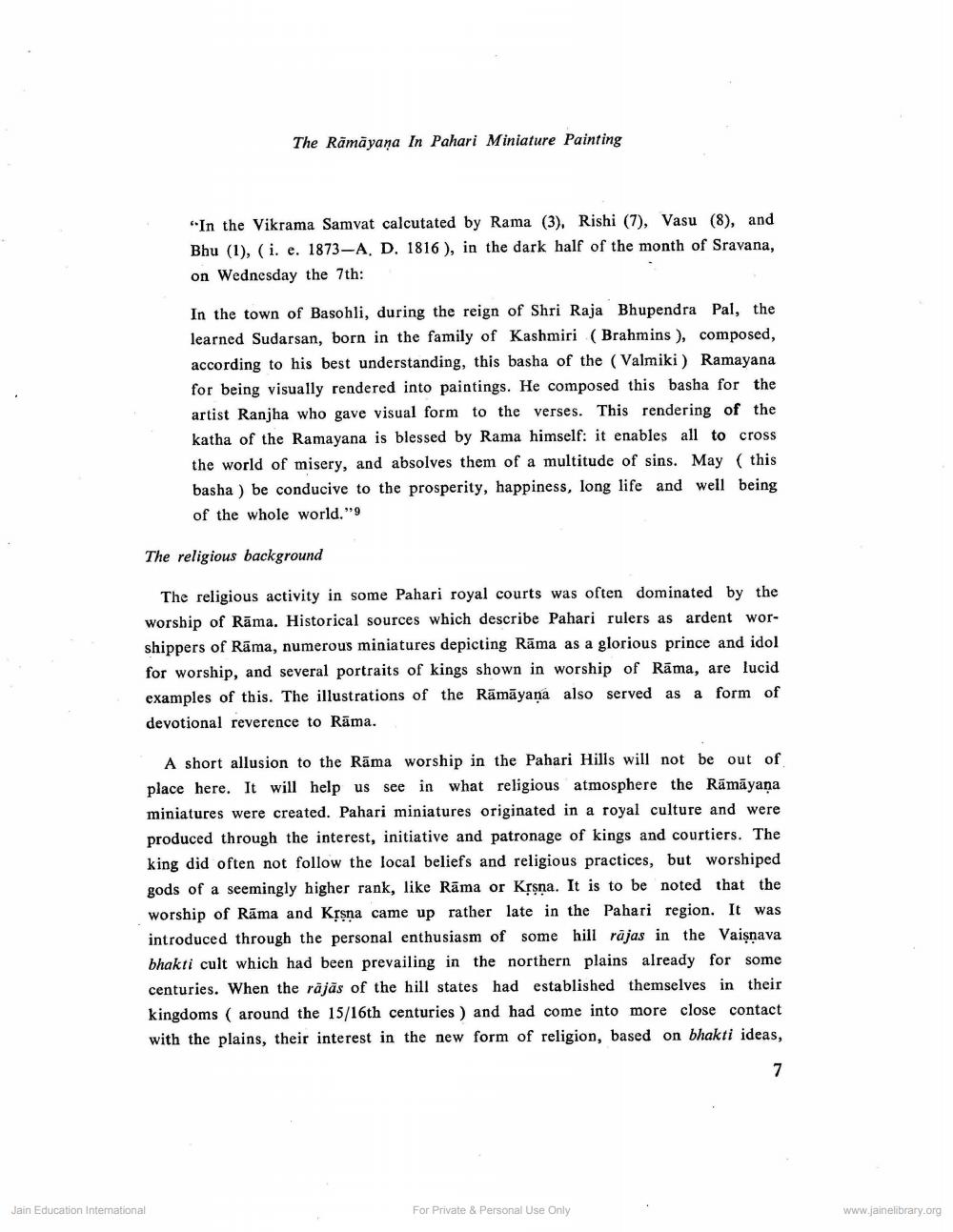________________
The Rāmāyaṇa In Pahari Miniature Painting
"In the Vikrama Samvat calcutated by Rama (3), Rishi (7), Vasu (8), and Bhu (1), (i. e. 1873-A. D. 1816), in the dark half of the month of Sravana, on Wednesday the 7th:
Jain Education International
In the town of Basohli, during the reign of Shri Raja Bhupendra Pal, the learned Sudarsan, born in the family of Kashmiri (Brahmins), composed, according to his best understanding, this basha of the (Valmiki) Ramayana for being visually rendered into paintings. He composed this basha for the artist Ranjha who gave visual form to the verses. This rendering of the katha of the Ramayana is blessed by Rama himself: it enables all to cross the world of misery, and absolves them of a multitude of sins. May this basha) be conducive to the prosperity, happiness, long life and well being of the whole world."9
The religious background
The religious activity in some Pahari royal courts was often dominated by the worship of Rama. Historical sources which describe Pahari rulers as ardent worshippers of Rama, numerous miniatures depicting Rāma as a glorious prince and idol for worship, and several portraits of kings shown in worship of Rama, are lucid examples of this. The illustrations of the Rāmāyaṇa also served as a form of devotional reverence to Rama.
A short allusion to the Rama worship in the Pahari Hills will not be out of place here. It will help us see in what religious atmosphere the Rāmāyaṇa miniatures were created. Pahari miniatures originated in a royal culture and were produced through the interest, initiative and patronage of kings and courtiers. The king did often not follow the local beliefs and religious practices, but worshiped gods of a seemingly higher rank, like Rama or Krsna. It is to be noted that the worship of Rama and Kṛṣṇa came up rather late in the Pahari region. It was introduced through the personal enthusiasm of some hill rajas in the Vaisnava bhakti cult which had been prevailing in the northern plains already for some centuries. When the räjäs of the hill states had established themselves in their kingdoms (around the 15/16th centuries) and had come into more close contact with the plains, their interest in the new form of religion, based on bhakti ideas,
For Private & Personal Use Only
7
www.jainelibrary.org




